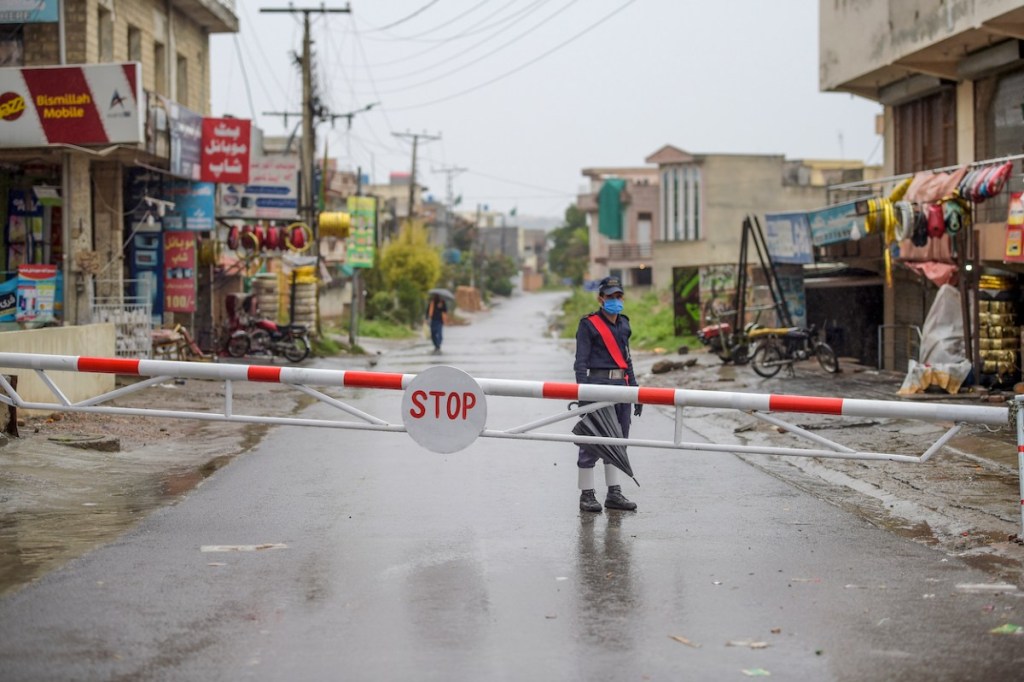The extension of the social lockdown, due to the COVID-19 virus, in Pakistan to 14th April has been accepted almost without dissent in the opinion making circles. It has highlighted the intellectual bankruptcy in our intelligentsia.
From a policy perspective, policies cannot be formulated and implemented on just fear. The fragile nature of the economy can hardly sustain further demand contraction. Lockdowns mean offices and factories shut down, leading to job loss. The discussion is not lives versus money. It is lives versus lives. It is rights versus rights. Does social distancing result in the same rights being afforded to every individual? Does social distancing provide the same right to everyone to earn one’s living? Pakistani society is deeply flawed structurally, with a very large population dependent on subsistence income. The policy of social distancing will deprive them of the right to earn and their right to live. No social nets exist in Pakistan to provide unemployment benefit. So the policy of social distancing is a privilege, a luxury enjoyed by a small percentage of the population.
How many people in Pakistan can actually sustain this lockdown? What percentage of the population have the luxury to work from home? Beyond this, what about the break in the education cycle? Further, a population of 200 million will need everyday maintenance services to items such as refrigerators, irons, TV, car mechanic, plumber etc., all to live a basic life within this lockdown. How will this be provided to those advocating and practicing social distancing? The irrationality of the lockdown is beyond comprehension. What if poor members of the population resort to looting, will the government then imprison them?
Draconian countermeasures like those in Pakistan have been adopted in many countries. Woefully inadequate data has been the basis of these decisions and the extreme measures taken by many countries are likely way out of line and may result in ultimately unnecessary and catastrophic consequences. Let us start with policy based on a mature understanding of the data. The data collected so far on the number of people infected and how the epidemic is spreading is unreliable across the world. Three months after the outbreak emerged, countries including the U.S., lack the ability to test a large number of people and few countries have trustworthy data on the prevalence of the virus.
The simplest way to judge whether we have a lethal disease is to look at the death rates. At the time of writing, Pakistan had reported 2754 confirmed cases with 43 deaths, giving a death rate of 1.6%. One has to be skeptical about the extent of spread of the virus as reported in official figures.
Key to understanding this is that the death rate is only as good as the number of tests. The world has reported around 72,000 coronavirus deaths, from a total of 1.6 million tested representing 4.2 per cent. The question is whether these figures are comparable to other contagious diseases like flu.
Statistics reported by the US indicate 23,000 deaths due to flu alone between September 2019 and March 2020. In the UK, a battle is raging between two conflicting research results, which have significant impact on the interpretation of these figures. The UK lockdown policy was based on research performed at the Imperial College. The Imperial College model suggests that the healthcare system will become overwhelmed, resulting in deaths of in excess of 500,000, an estimate revised downwards later on. Researchers from Oxford University subsequently published another model, suggesting that over 68% of the population had already been infected unknowingly, again an estimate which needs verification based on significant amount of data. Hence how real is the 4.2% figure quoted above in the absence of reliable data? What is clear is that real rates of infection and COVID-19 induced deaths can only be accurately determined by widespread testing for antibodies, from a random sample that is representative of the general population, which has not occurred to date.
Given that researchers from the same country and from reputable education institutions can have different positions on the spread of the virus leads to the question – can such draconian lockdown policy measures be undertaken based upon unreliable data?
Given that researchers from the same country and from reputable education institutions can disagree, raises the fundamental political question – are the policies adopted in the West driven more by politically insecure governments who fear the consequence of their population discovering the extent of their governments’ neglect of the healthcare systems?
Extrapolating this back to Pakistan, and the lockdown policies adopted, one has to ask an obvious question – did the government even consider the data, or the absence of it, before instituting these measures? Or it blindly followed the West in this matter as it does in other matters.
No one doubts the medical community in the sincerity of their recommendations to the government. It is our medical community that witnesses the pain of patients suffering from pneumonia, exacerbated by the absence of ventilators. But equally painful is the difficulties of families with four, five or six young children surviving each day without food. Hence the opinion of medical experts alone cannot be the basis of such draconian social distancing policies. Surely the wider political, social and economic perspectives have to be considered.
The consequences for Pakistan for such draconian policies have not dawned on the policy makers yet. Based on track record, rarely have we seen any well thought through policy from our governments, past and present included.
Khalid Salahudin – Pakistan
#كورونا | #Covid19 | #Korona

